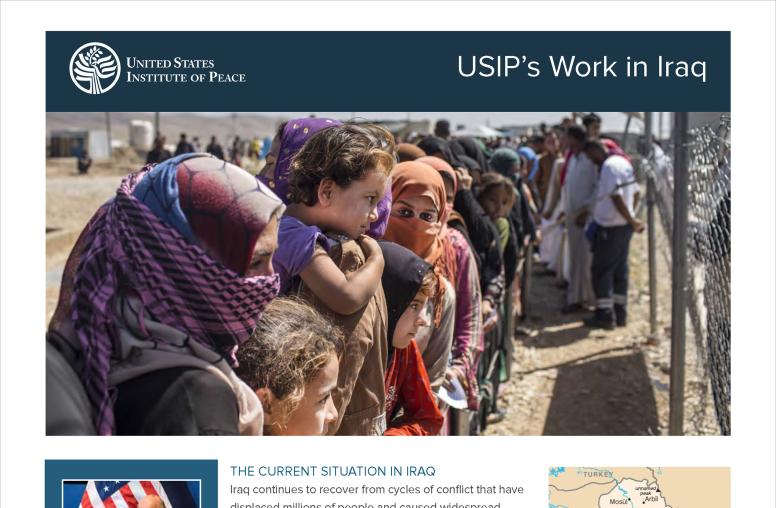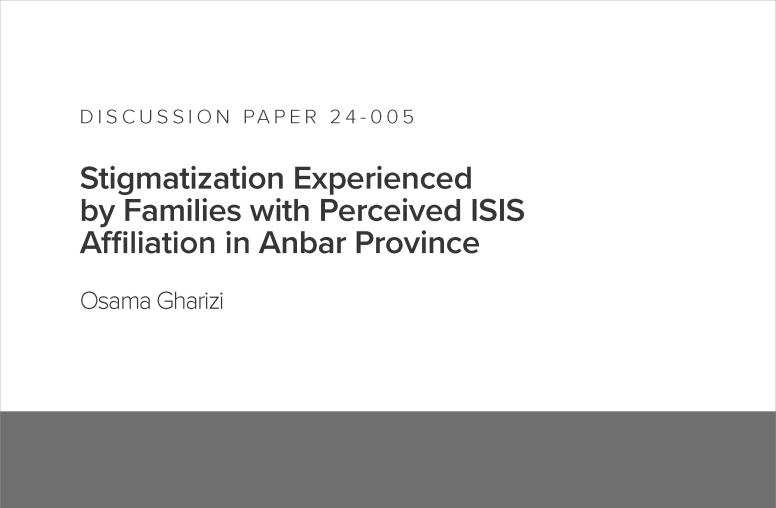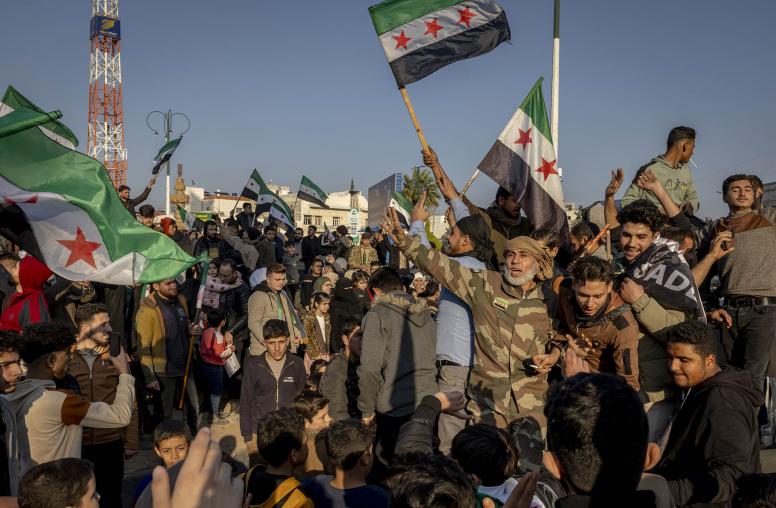Cooling Iraq’s Conflict With Community Dialogue
Passing the Baton Recap: Peace Talk on `How We Build Peace’ by Sarhang Hamasaeed
The violence of extremists—and the chaos they spawn—takes place in towns, villages, streets and homes, not along some far-off front line. That’s where extremist groups seek recruits and where residents they victimize plot revenge, said the U.S. Institute of Peace’s Sarhang Hamasaeed in a Ted Talk-style presentation during the Jan. 10 “Passing the Baton” conference. While national and international efforts to bring peace to such areas can help, dialogue and mediation at the community level has proven to be a successful key to curbing conflict, he said.

USIP’s experience supporting negotiations between Shiites and Sunnis in a violence-torn region of Iraq provides a case study for the possibilities of building peace through a well-designed process of conflict analysis and mediation.
Hamasaeed, USIP’s director of Middle East programs, began his “Peace Talk” by describing how violence had determined the course of his own life and made him an advocate for people affected by conflict.
“There are practical ways to make peace possible even in the toughest conflicts like Iraq, Syria, Yemen and Afghanistan.”
Born an Iraqi Kurd, Hamasaeed was four years old in 1980 at the beginning of the Iraq-Iran war, an eight-year conflict that claimed more than a quarter million Iraqi lives. When he was 12, the Iraqi dictator Saddam Hussein used chemical weapons on the Kurdish city of Halabja, and embarked on what is known as the Anfal genocide operations in which some 4,500 Kurdish villages were razed, including the hometowns of his parents’ families. More than 180,000 civilians were taken away in the onslaught, many of them later found in mass graves.
“Anfal and Halabja made me ask, `Where is the international community, where is humanity, where is God from all these killings?’” Hamasaeed said.
Today the violence in the Middle East has widened. Increasing numbers of youth grow up surrounded by conflict and confronted by the cruel carrot-and-stick choices posed by religious or non-religious political parties, armed or unarmed groups and terrorist organizations, he said.
Recruiters urge young people to join for “a better future: power, money, jobs, leadership, ideology,” he said. “The threats, and the artificial choices that the youth of Iraq, Syria, Yemen, and elsewhere face today are at their worst when offered by a terrorist organization like Daesh,” the Arabic term for the Islamic State.
Risk of Revenge
While ISIS has sowed conflict and division across Iraq, successful efforts to head off further violence in the wake of the group’s defeat near the Sunni city of Tikrit show what peacebuilding strategies can accomplish, he said.
In June 2014, the extremist group massacred 1,700 unarmed Shiite military personnel from a base called Camp Speicher. Once the extremist group was cleared out of Tikrit the following spring, revenge killings were likely to follow involving Shiite militias, Sunni tribal adversaries, and Sunnis retaliating against the government’s largely Shiite forces, he said. And the government was reluctant to let people return home if there was any suspicion of connections to ISIS.
Each action and reaction would become a recruiting tool for extremists, Hamasaeed said. Instead, USIP worked with Iraqi mediators to analyze the local conflict conditions precisely and to create a dialogue among tribal leaders. The talks improved understanding among the tribes involved on both sides and reduced tensions and the temptation to impose collective punishment for what was individual guilt. Community leaders in the area disavowed the violence, a process was established with national authorities to vet returnees, and the families and community leaders of the victims agreed to seek justice through formal legal channels.
The peace has held and 320,000 people have returned home, he said.
“We need to work collectively, bottom-up and top-down,” Hamasaeed said. “By using both approaches, and applying strategic patience, there are practical ways to make peace possible even in the toughest conflicts like Iraq, Syria, Yemen and Afghanistan.”



